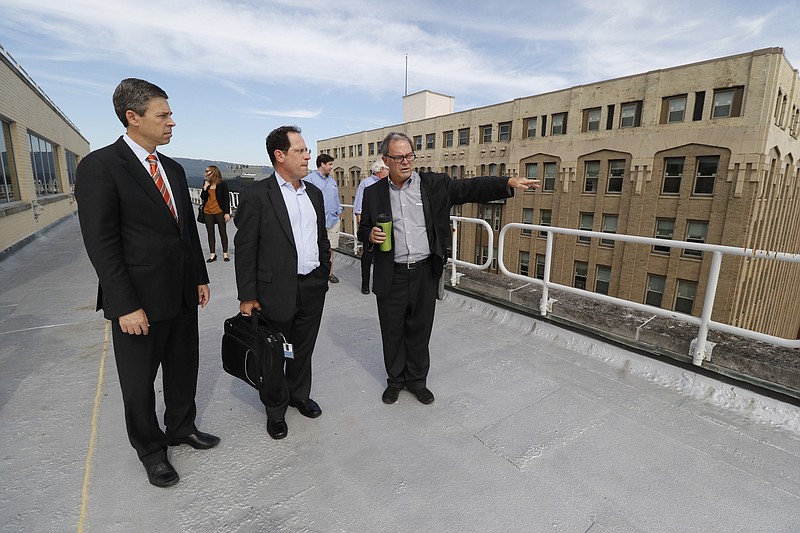Read more
Chattanooga puts its mark on innovation downtownFCC allows EPB service expansion: Gig Internet could expand beyond Chattanooga area
If there is one thing Chattanoogans love, it's recognition for their town's awesomeness.
And that's no slight; we should be proud of it. After all, it's taken countless man hours and investment dollars to turn this post-industrial forgottenburg into a shimmering Gig City.
As a testament to how much we love it when the rest of the world gets a chance to learn about the wonders of this place, just scroll through Facebook or Twitter whenever a reputable outlet publishes a write-up, giving Chattanooga a shoutout. The article will linger in your social media feeds for weeks, typically accompanied by a vast collection of exclamation points.
"Best Town Ever!!!"
One such article, penned by Bruce Katz of the Brookings Institution, started making the rounds earlier this week. Over the past couple of years, Brookings and the Berke administration seem to have developed a friendly bond, and Katz's article was a report on what he has learned about our fair city.
The crux of the flattering piece is that other municipalities can learn a thing or two about metropolitan innovation by using Chattanooga as a case study. It starts out as a pretty standard, yet friendly, summary - one that would make the heart of most locals rise in their chest. Mine certainly was until I came across one curious passage:
"The catalyst of the city's economic revival is an unusual one - the Electric Power Board of Chattanooga (EPB), the city's public utility," which "has built one of the world's most extensive municipal high-speed Internet networks."
Say what? With all due respect to Katz, he's gotten this part of the Chattanooga story jumbled. The unveiling of the Gig here did not stimulate innovation or a "revival." It's the other way around. This city's decades-old innovative spirit provided the Gig a stage where it could flourish.
You see, the success of any civic project is almost wholly dependant on the environment where it's born. This is true with sports teams, community centers, hiking trails, you name it. If an endeavor is pursued in an ill-fitting civic ecosystem, chances are it will struggle. Conversely, if a project is pursued where the populace will embrace it and where people know how to grow it, chances are it will do well.
Whatever level of success the Gig has achieved can largely be tied to the fact that it was given life by a city whose people have great civic pride and have demonstrated a long-established, forward-thinking mindset.
Katz was right to note the impressive level of collaboration among Chattanooga's philanthropic foundations, universities, nonprofit organizations, business incubators and real estate developers. He was off the mark, however, by not pinpointing this civic chorus as "the catalyst of the city's economic revival."
The people at these entities saw the benefits of the Gig and quickly worked it into the local narrative as a way to attract attention and help promote this place as America's greatest mid-sized city - one reason, among many others, for Chattanooga's greatness.
By recalibrating the Chattanooga story, Katz shifted an appreciation away from the real power that propels this city forward. What's made this town special for years is a unique relationship between civil society and local government.
Before the idea was hatched to designate 140 downtown acres as an Innovation District, one already existed. It didn't have street signs or a logo, of course. It was in the hearts and minds of community champions.
To some readers, I might be splitting hairs with this amendment of Katz's article. But it's a necessity. Why? Because it only takes a couple of unchecked edits to turn a history into a fable.
David Allen Martin is a syndicated columnist who writes from Chattanooga. Email him at davidallenmartin423@gmail.com and follow him on Twitter @DMart423.
